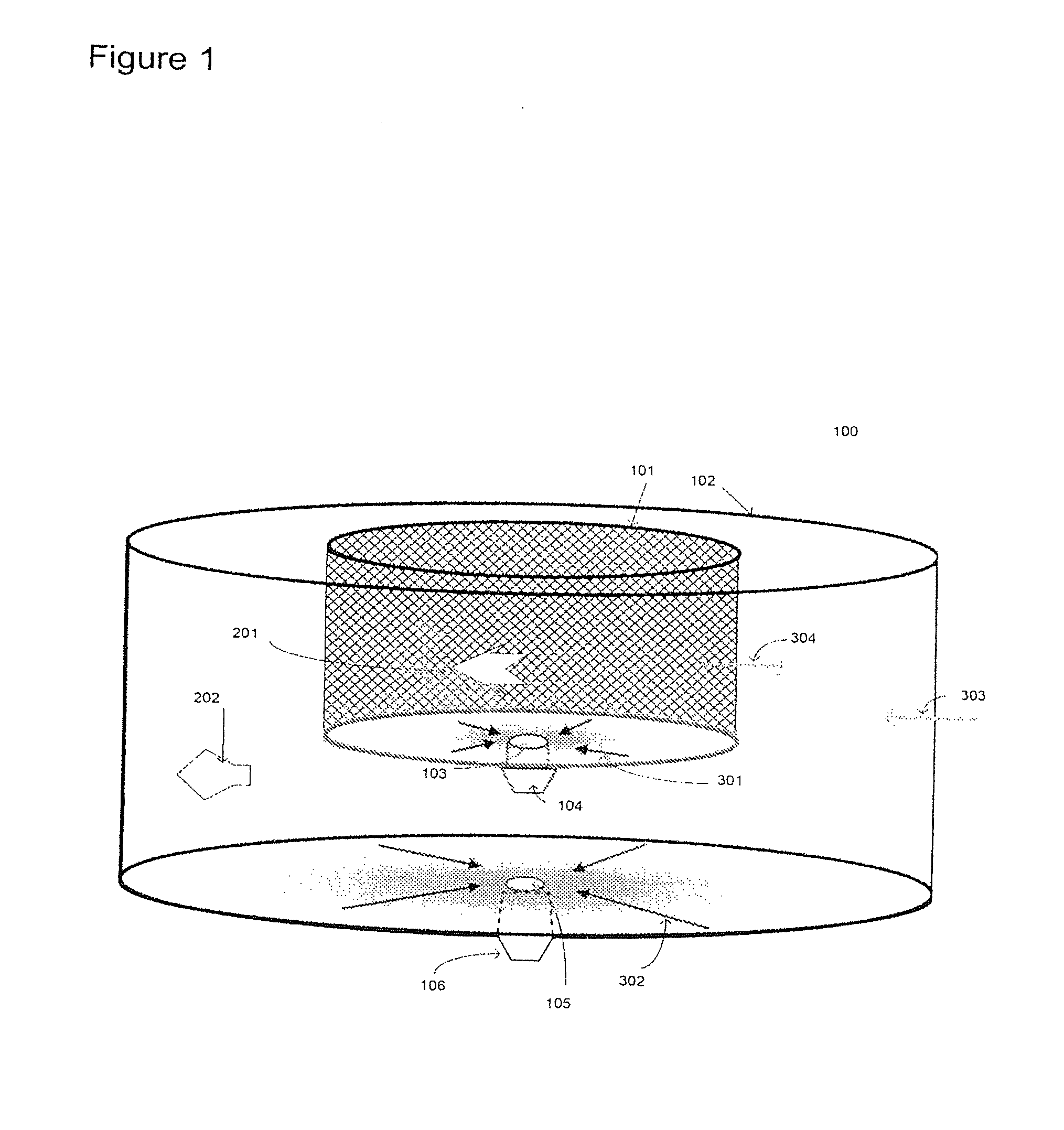Systems and methods for sustainable aquaculture
a sustainable aquaculture and system technology, applied in the field of sustainable aquaculture, can solve the problems of reducing the amount of waste, threatening global food security, and severely restricting the discharge of aquaculture effluent into these aquatic environments, so as to reduce the amount of waste and reduce the amount of feed waste
- Summary
- Abstract
- Description
- Claims
- Application Information
AI Technical Summary
Benefits of technology
Problems solved by technology
Method used
Image
Examples
Embodiment Construction
[0019]Provided herein are systems and methods for fish farming in a sustainable manner, and for bioremediation of eutrophic zones. Certain embodiments provided herein are based on nutrient recycling and recovery, and multitrophic polyculture. Certain embodiments provided herein are developed to alleviate the problems with autochthonous and allochthonous nutrients in aquaculture. It can also be used in offshore aquaculture where deep sea nutrients are drawn up by natural or artificial upwelling to boost primary production.
[0020]The aquaculture approach provided herein mimics parts of a natural trophic system or food chain, wherein primary producers, such as algae, generate biomass using sunlight and nutrients in the water. Planktivores and herbivores, consume the primary producers; higher trophic level consumers, such as piscivores, in turn consume those lower in the food chain. Detritivores derive energy from solid waste, including uneaten fish feed, excrement, and dead organisms. A...
PUM
| Property | Measurement | Unit |
|---|---|---|
| size | aaaaa | aaaaa |
| angle | aaaaa | aaaaa |
| diameter | aaaaa | aaaaa |
Abstract
Description
Claims
Application Information
 Login to View More
Login to View More - Generate Ideas
- Intellectual Property
- Life Sciences
- Materials
- Tech Scout
- Unparalleled Data Quality
- Higher Quality Content
- 60% Fewer Hallucinations
Browse by: Latest US Patents, China's latest patents, Technical Efficacy Thesaurus, Application Domain, Technology Topic, Popular Technical Reports.
© 2025 PatSnap. All rights reserved.Legal|Privacy policy|Modern Slavery Act Transparency Statement|Sitemap|About US| Contact US: help@patsnap.com



